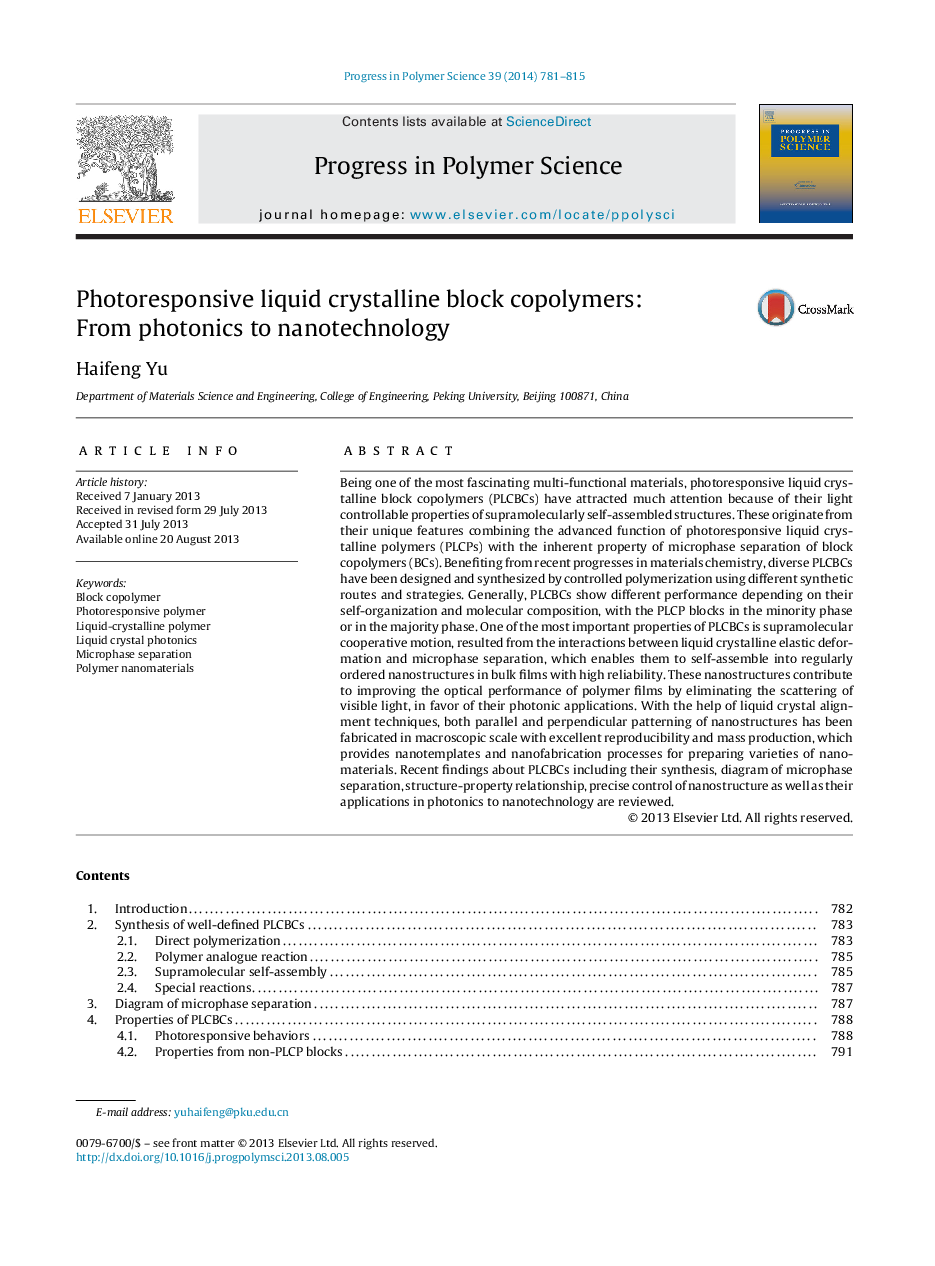| Article ID | Journal | Published Year | Pages | File Type |
|---|---|---|---|---|
| 5208304 | Progress in Polymer Science | 2014 | 35 Pages |
Being one of the most fascinating multi-functional materials, photoresponsive liquid crystalline block copolymers (PLCBCs) have attracted much attention because of their light controllable properties of supramolecularly self-assembled structures. These originate from their unique features combining the advanced function of photoresponsive liquid crystalline polymers (PLCPs) with the inherent property of microphase separation of block copolymers (BCs). Benefiting from recent progresses in materials chemistry, diverse PLCBCs have been designed and synthesized by controlled polymerization using different synthetic routes and strategies. Generally, PLCBCs show different performance depending on their self-organization and molecular composition, with the PLCP blocks in the minority phase or in the majority phase. One of the most important properties of PLCBCs is supramolecular cooperative motion, resulted from the interactions between liquid crystalline elastic deformation and microphase separation, which enables them to self-assemble into regularly ordered nanostructures in bulk films with high reliability. These nanostructures contribute to improving the optical performance of polymer films by eliminating the scattering of visible light, in favor of their photonic applications. With the help of liquid crystal alignment techniques, both parallel and perpendicular patterning of nanostructures has been fabricated in macroscopic scale with excellent reproducibility and mass production, which provides nanotemplates and nanofabrication processes for preparing varieties of nanomaterials. Recent findings about PLCBCs including their synthesis, diagram of microphase separation, structure-property relationship, precise control of nanostructure as well as their applications in photonics to nanotechnology are reviewed.
